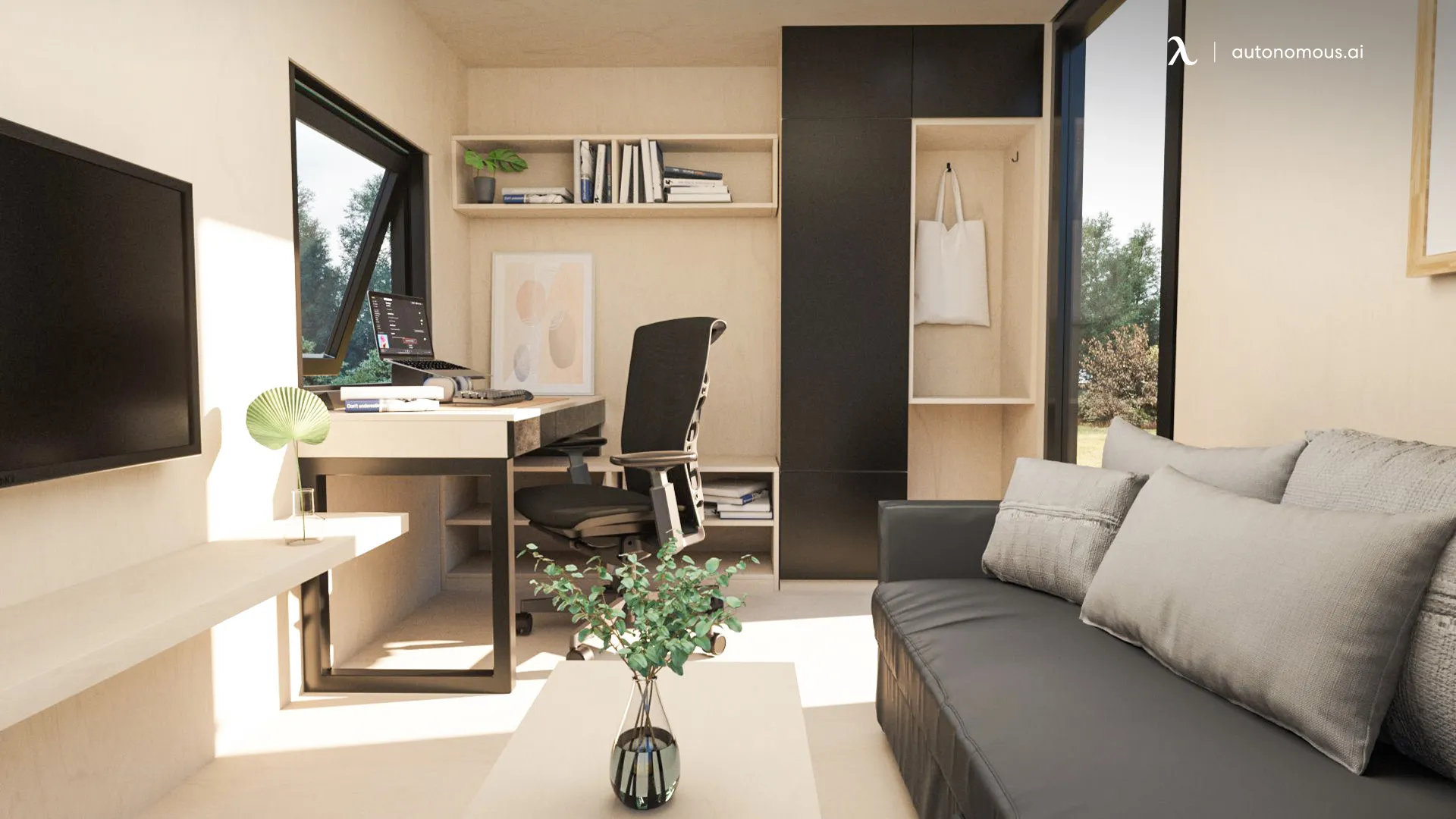
Table of Contents
Accessory Dwelling Units (ADUs) have become a practical solution for homeowners looking to expand their property’s functionality without taking up significant space. Among these, the 150 sq ft ADU stands out for its affordability and versatility. Compact yet efficient, it offers creative solutions for home offices, guest accommodations, or personal retreats. In this guide, we’ll explore 150 sq ft ADU plans, costs, and features to help you make the most of this small but impactful addition.
1. What Can You Do with a 150 sq ft ADU?
Despite its modest size, a 150 sq ft ADU offers remarkable versatility and functionality. Here are some of the best ways to utilize this compact structure:
- Home Office
Transforming a 150 sq ft ADU into a backyard office is one of the most practical uses, especially for remote workers. With dedicated space for work, you can enjoy a quiet environment that boosts productivity while separating work from home life. Include ergonomic furniture and soundproofing for added comfort and focus.
Writers can find solace in a writing room that fosters creativity and focus. Equip the ADU with a sturdy desk, ergonomic chair, and inspiring decor to craft the perfect environment for producing your best work.
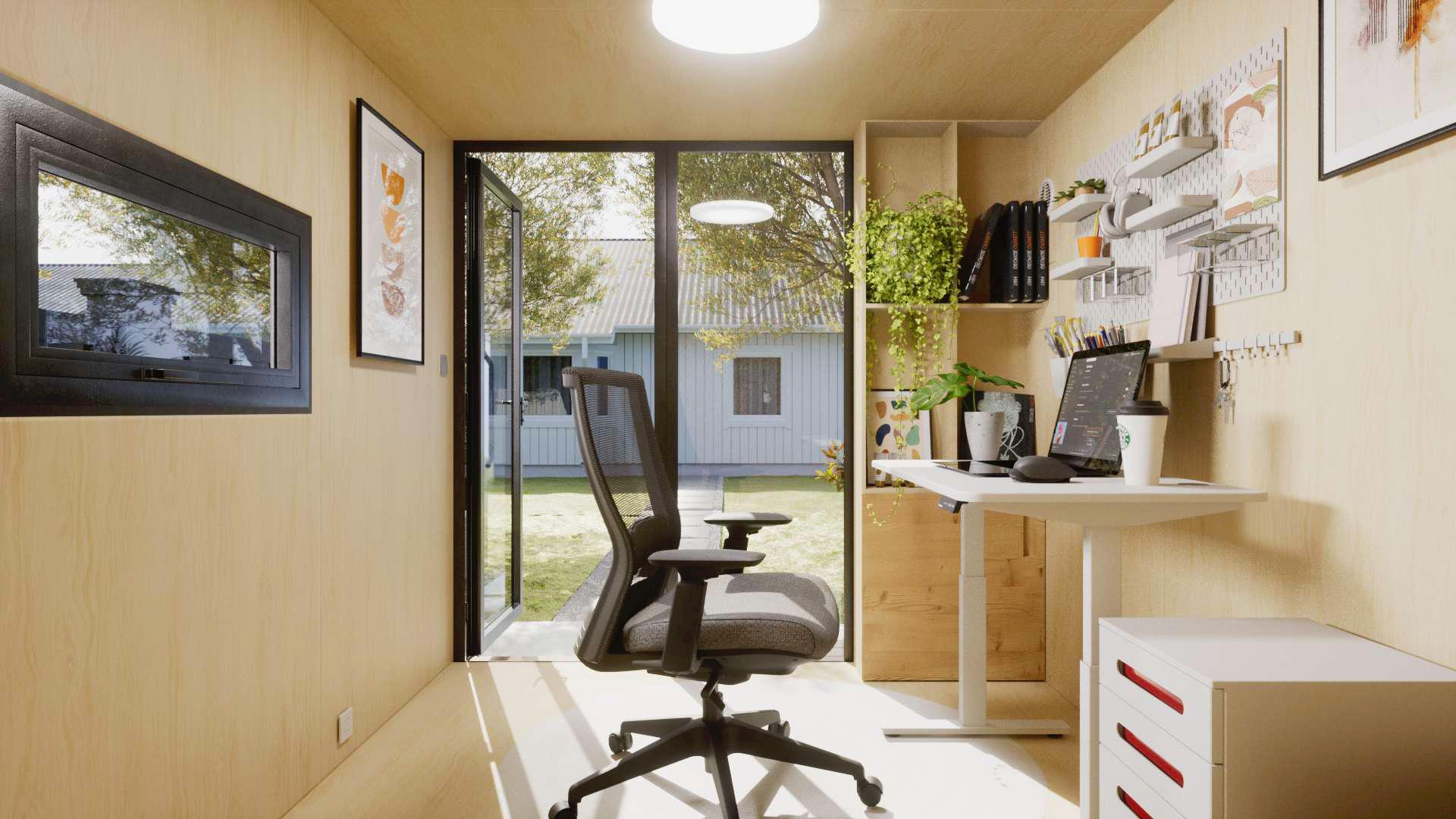
- Guest Room
With a small bed, kitchenette, and bathroom, a 150 sq ft ADU can be transformed into a cozy and welcoming small guest house. The compact size offers your visitors privacy without requiring a large footprint.
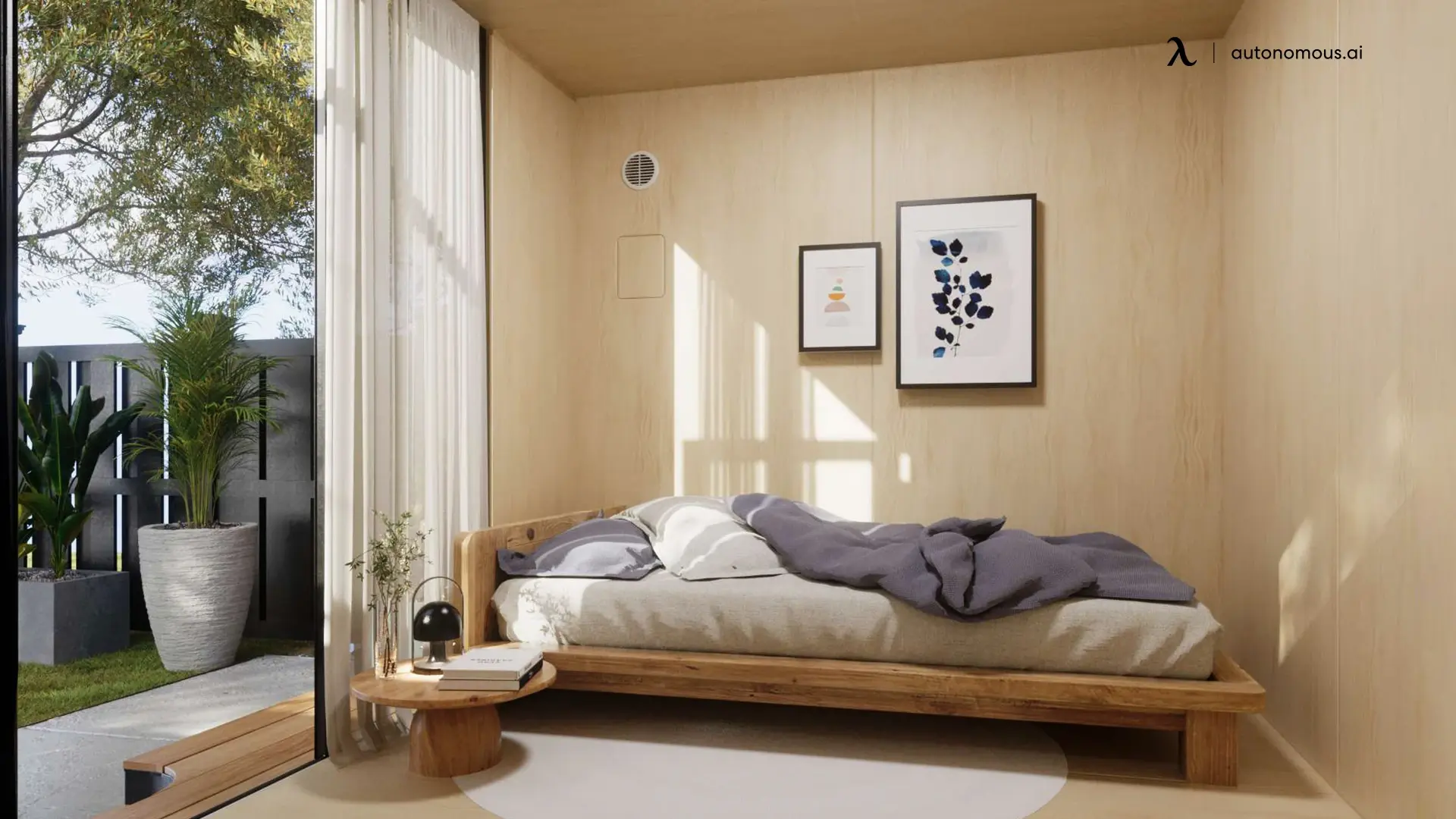
- Creative Studio
Artists can transform their ADU into a backyard art studio with ample natural light and storage for supplies. This serene space is perfect for painting, sculpting, or crafting while staying close to home.
Writers can find solace in a writing room that fosters creativity and focus. Equip the ADU with a sturdy desk, ergonomic chair, and inspiring decor to craft the perfect environment for producing your best work.
Musicians and audiophiles can convert their ADU into a fully functional backyard music studio. With proper soundproofing, the space can house instruments, recording equipment, and storage, allowing for uninterrupted creative sessions.

- Personal Retreat
Use your ADU as a personalized retreat, whether it’s a man cave shed or a she shed. Equip it with comfortable seating, a mini fridge, and entertainment options for a private space to unwind, watch movies, or enjoy hobbies without disruption.
A backyard reading room is a cozy way to make use of your ADU. Add bookshelves, comfortable chairs, and soft lighting to create the perfect spot for escaping into your favorite novels.
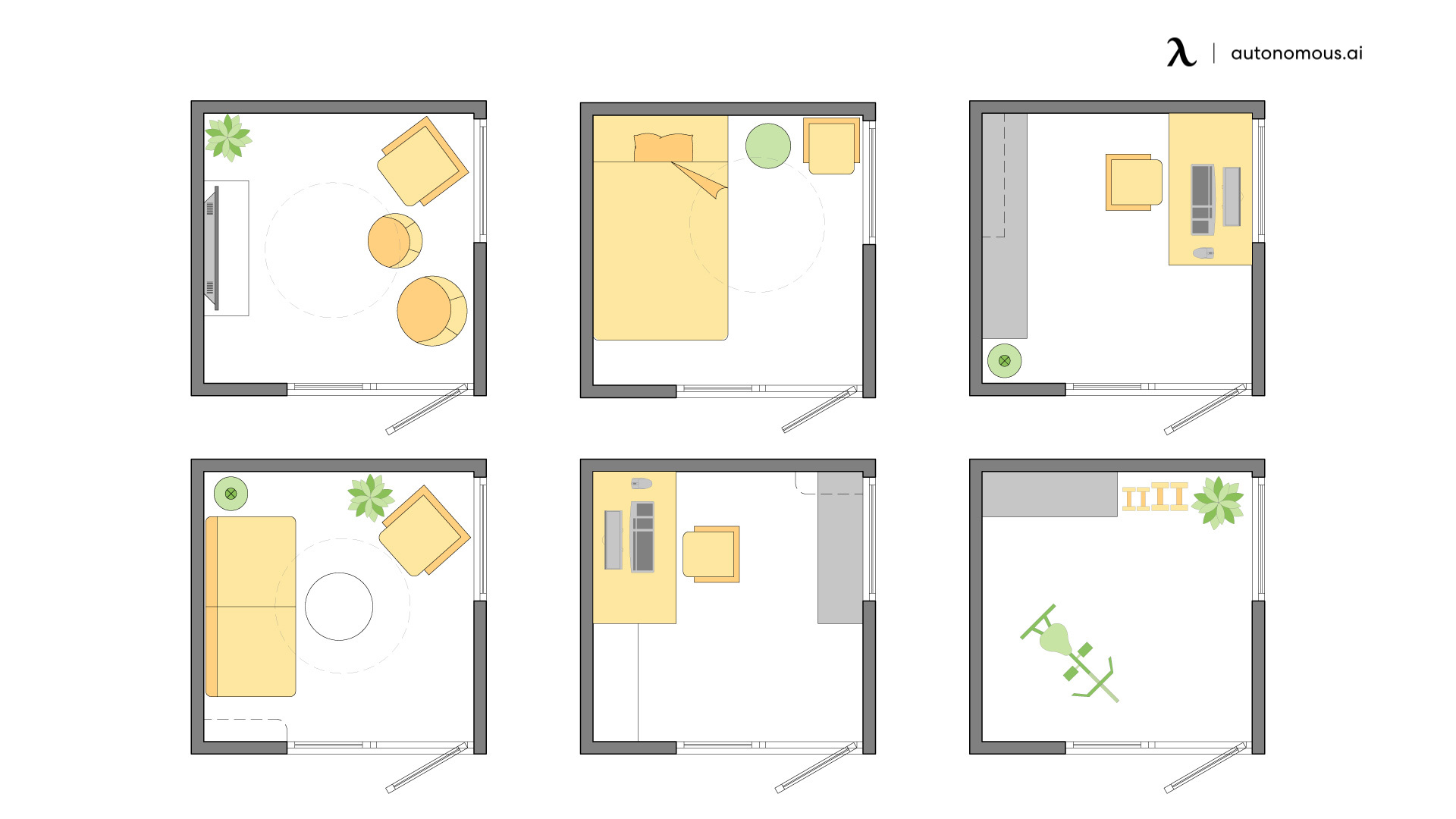
A backyard gym shed is another excellent use of a 150 sq ft ADU. With just enough room for workout equipment like weights, a treadmill, or yoga mats, it provides a private fitness zone to stay active without leaving home.
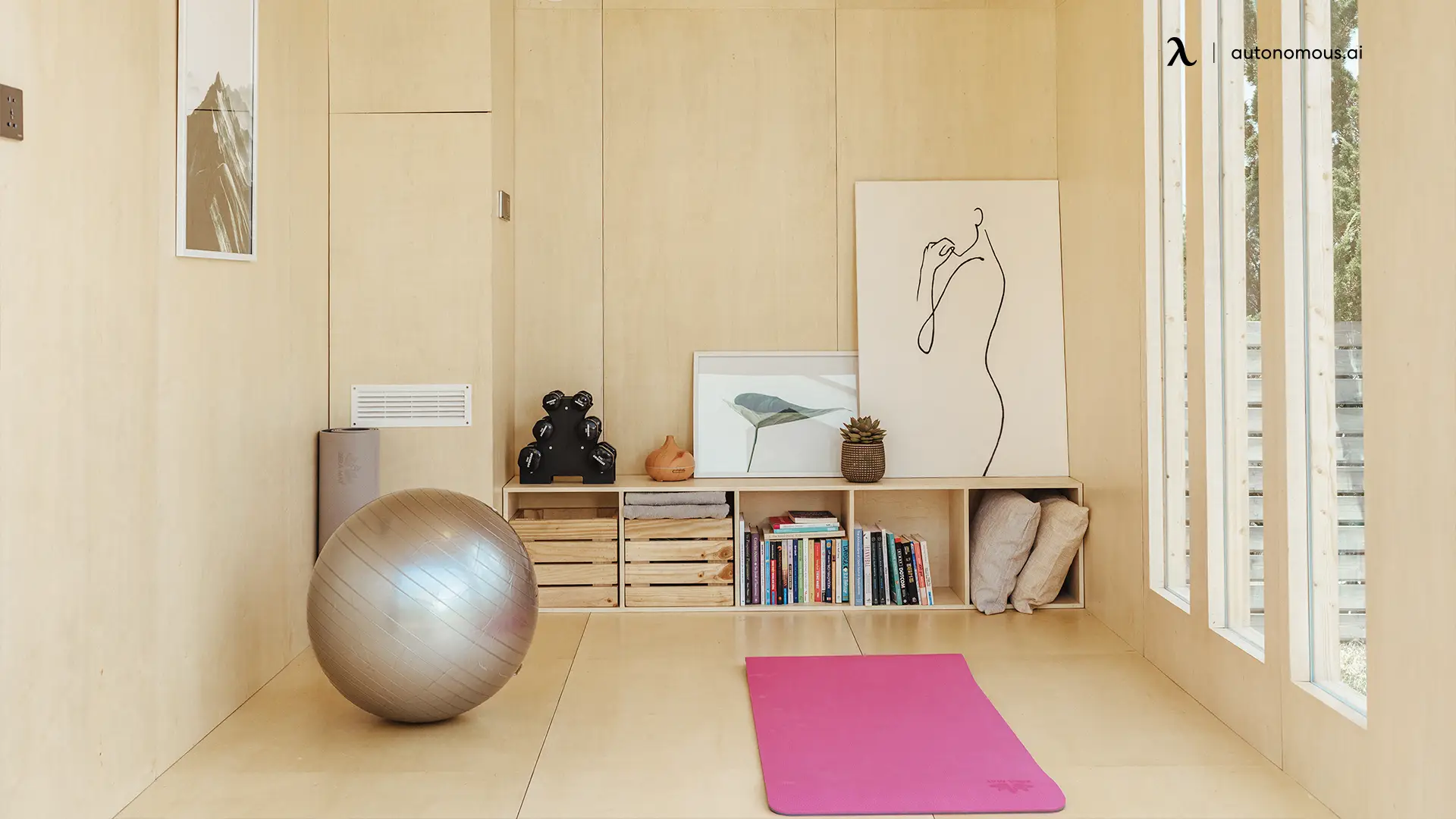
2. Cost of a 150 sq ft ADU
Building a 150 sq ft ADU is an affordable way to expand your property’s functionality, but the exact cost can vary depending on location, materials, and design choices. On average, homeowners can expect to spend between $30,000 and $75,000, though regional factors can influence this range.
2.1. Cost Variations by Region
The cost of constructing an ADU depends heavily on where you live. For example:
- In California, the average ADU cost in California ranges from $50,000 to $300,000 for units of all sizes, but smaller ADUs like a 150 sq ft model can be built for significantly less.
- The ADU cost in Los Angeles often starts at $60,000 due to higher labor and material expenses, particularly for custom-built units.
- Homeowners in the Bay Area face premium prices, with the ADU cost in the Bay Area typically being higher due to demand and land value.
- In Sacramento, the ADU cost in Sacramento is generally more affordable compared to coastal cities, making it a popular option for budget-conscious homeowners.
In other areas, such as Portland or San Diego, costs also vary. The prefab ADU cost in Portland often falls on the lower end of the scale, while the San Diego ADU cost is influenced by both property values and local permitting fees.
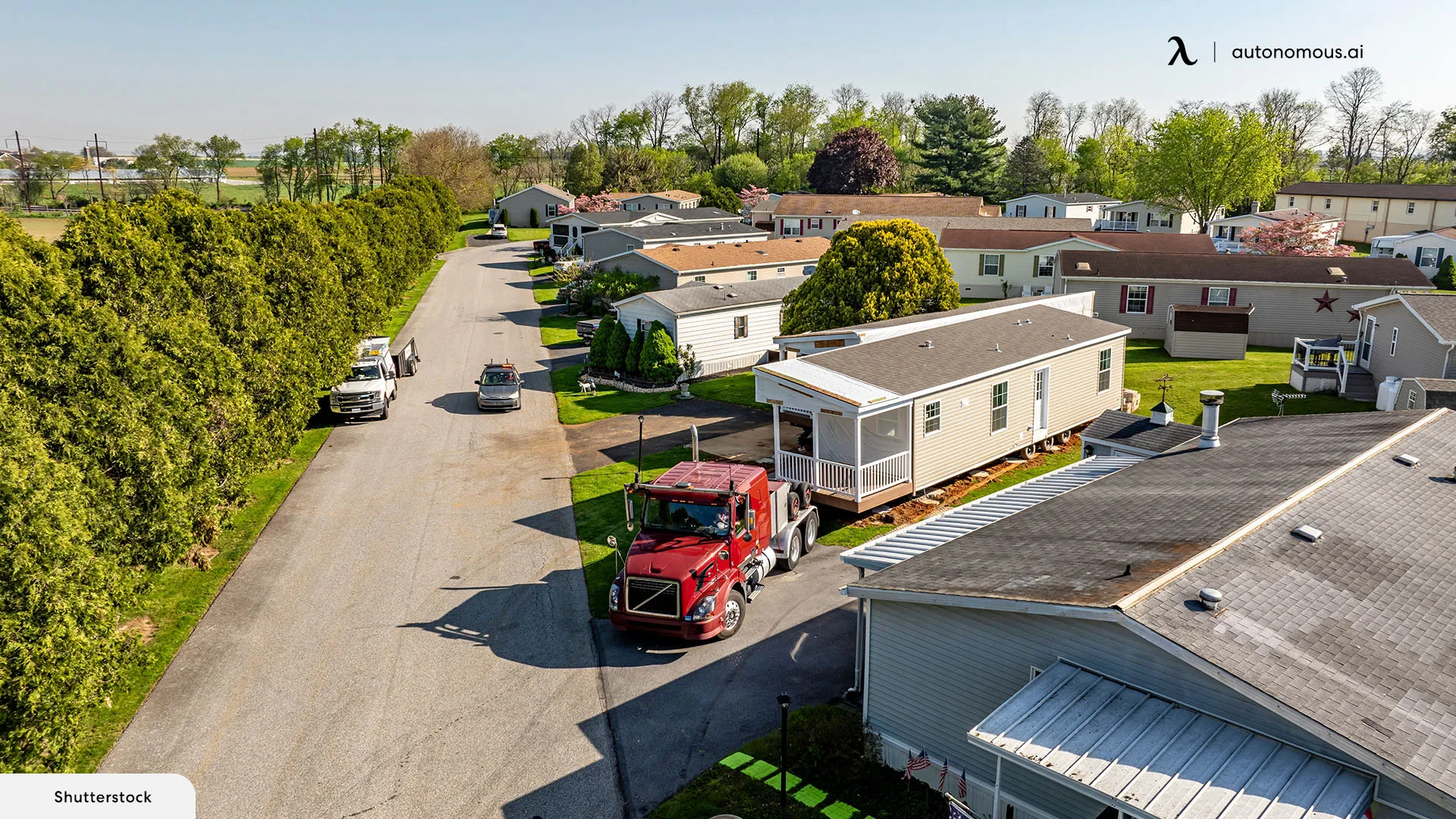
2.2. Prefab vs. Custom-Built ADUs
Prefab Units: Prefabricated ADUs are more affordable, with costs ranging from $30,000 to $50,000 for a 150 sq ft unit. These units are built off-site and assembled on your property, reducing labor costs and construction time. Prefab options are especially popular in areas like California, where demand for streamlined housing solutions is high.
Custom-Built ADUs: Custom-built ADUs are more expensive, ranging from $50,000 to $75,000. These designs allow homeowners to tailor layouts, finishes, and materials but come with additional costs for labor and permitting.
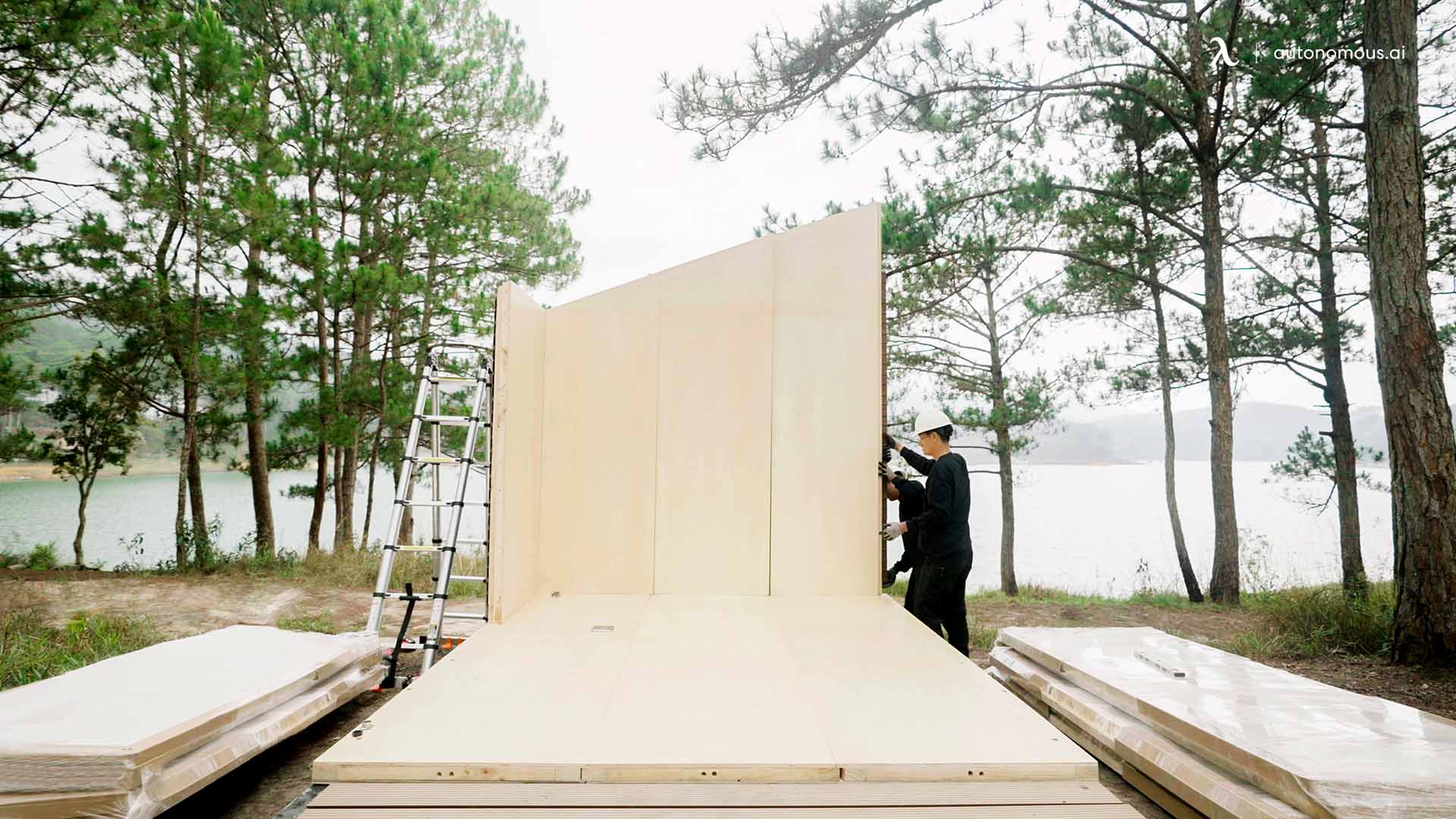
2.3. Breaking Down Costs
To better understand the total investment, let’s look at specific expense categories:
- Site Preparation: Grading, foundation work, and utility hookups typically cost $3,000 to $10,000, depending on property conditions.
- Permits and Fees: Depending on the location, permitting costs can range from $1,000 to $5,000. For a detailed analysis, check out the ADU construction cost breakdown.
- Materials and Labor: Using premium materials like insulated panels and double-pane windows can increase costs but ensure durability and energy efficiency.
Homeowners can keep costs down by choosing prefabricated units or exploring affordable regions like Sacramento or Portland. Those willing to invest more in design and features might find higher costs in areas like Los Angeles or the Bay Area worth it for long-term value.
Whether you’re opting for a prefab or custom-built option, understanding regional differences and planning your budget carefully ensures your 150 sq ft ADU is both cost-effective and tailored to your needs.
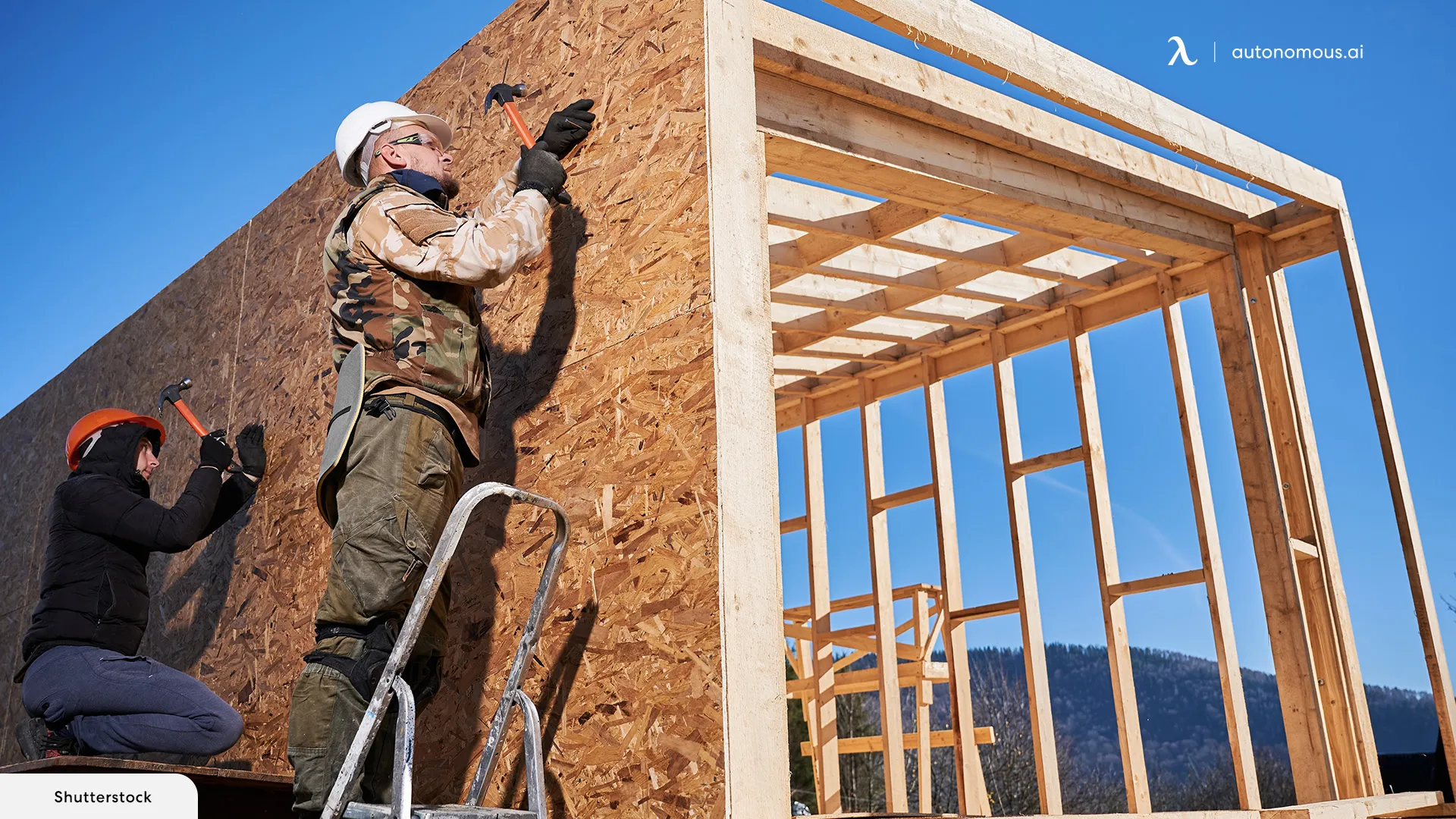
3. Best Floor Plans for a 150 sq ft ADU Home Office
Designing an efficient 150 sq ft ADU home office requires creativity and thoughtful planning. Here are some popular floor plan ideas:
3.1. Studio Layout
This layout combines a workspace, storage, and a small relaxation area in an open-concept design. Add a compact kitchenette for coffee breaks and a small seating area for brainstorming sessions or client meetings. The studio layout is ideal for simplicity and productivity.
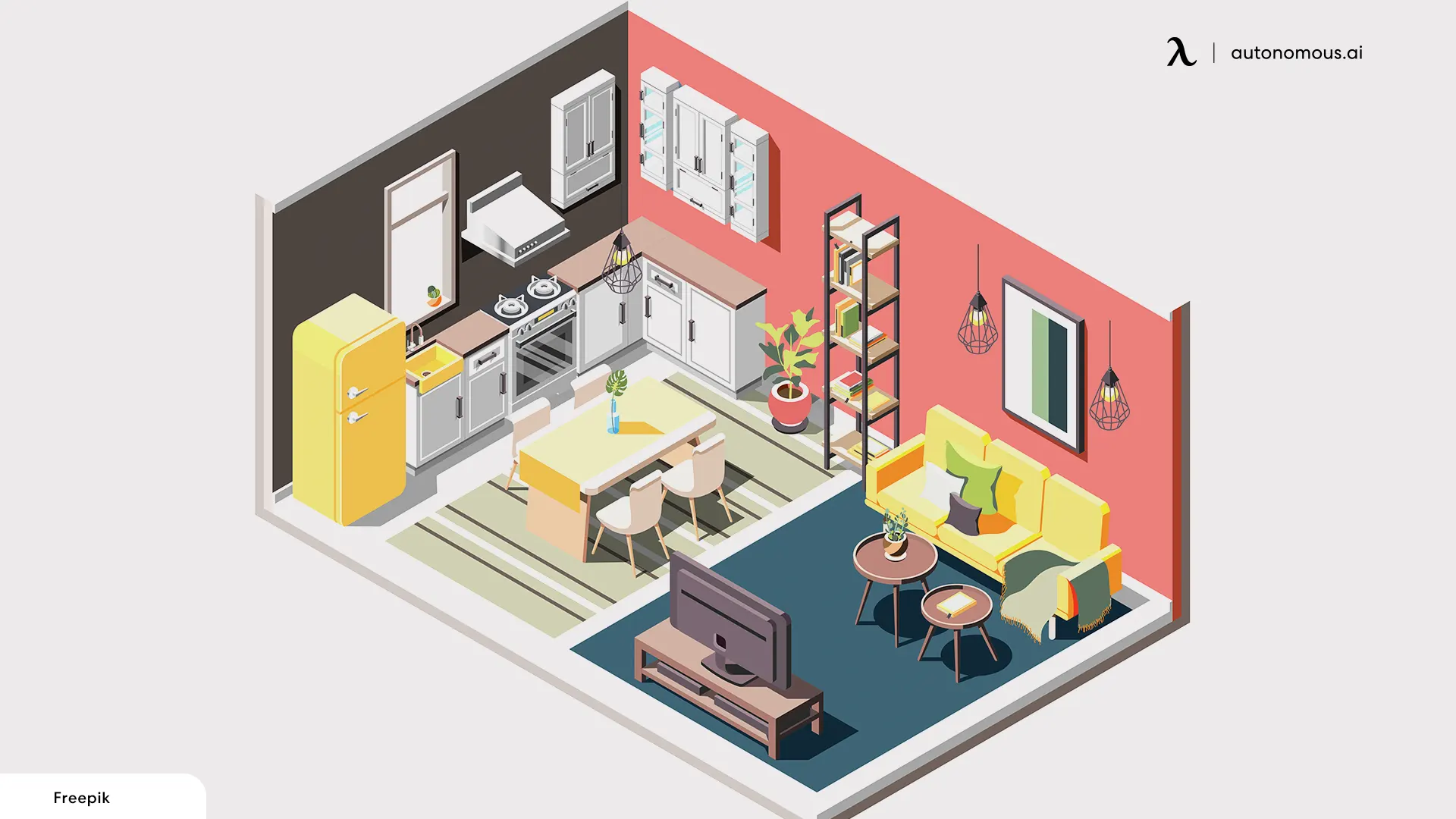
3.2. Lofted Layout
If the ADU has higher ceilings, a loft can be added for storage or sleeping. The ground floor can then focus entirely on work essentials, such as a spacious desk, shelves, and comfortable seating. This layout is perfect for keeping the workspace clutter-free while maximizing vertical space.
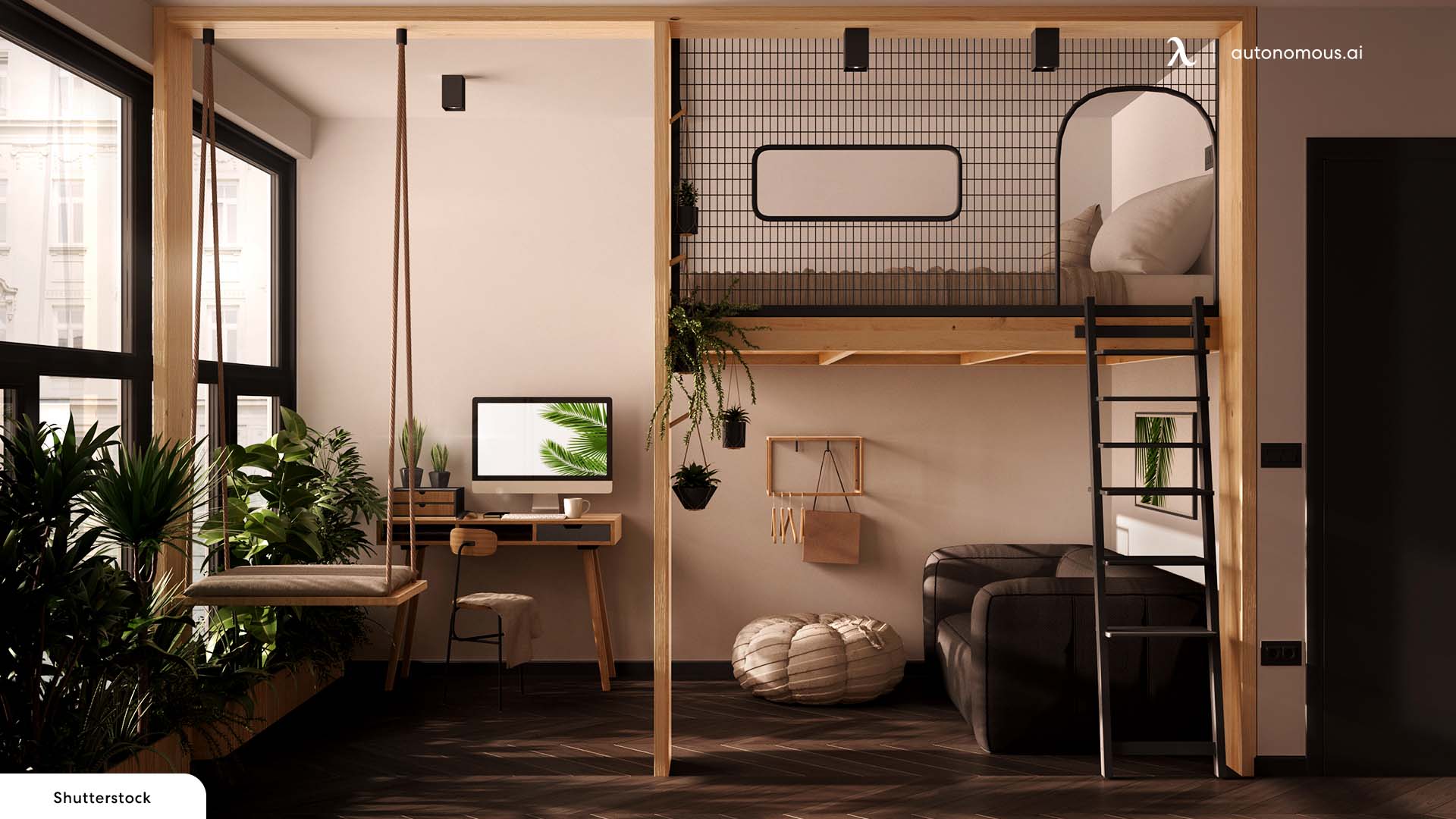
3.3. Hybrid Layout
Divide the 150 sq ft space into a dedicated office zone and a relaxing lounge area. Include modular furniture, such as foldable desks or Murphy beds, to adapt the space as needed. This plan is ideal for those who want a versatile space that serves multiple purposes.

3.4. Outdoor Integration
Extend the workspace by integrating an outdoor patio or deck. Sliding glass doors can open up the ADU to the outdoors, making the space feel larger and more connected to nature.
For inspiration, explore ADU floor plans that focus on efficient layouts, smart storage, and multi-functional furniture to make the most of small spaces. Additionally, backyard ADU plans offer creative ideas for incorporating outdoor elements like patios and decks, enhancing both functionality and aesthetic appeal in compact units. These plans strike the perfect balance between form and function, making your 150 sq ft ADU feel spacious and practical.
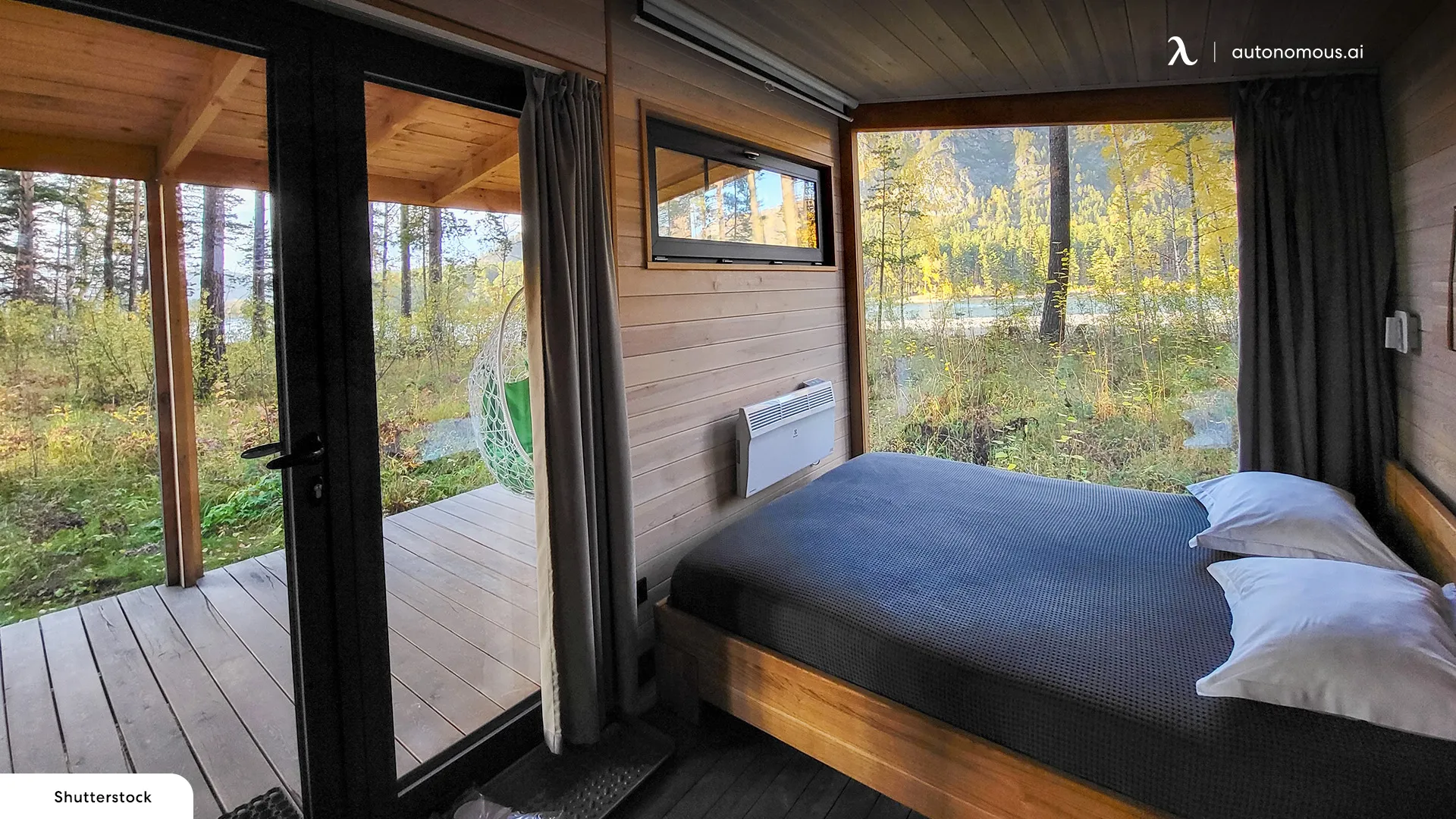
4. Must-Have Features in a 150 sq ft ADU Home Office
To maximize efficiency and comfort in a 150 sq ft ADU home office, consider these essential features:
- Ergonomic Design: Invest in adjustable desks, ergonomic chairs, and anti-fatigue mats to enhance comfort during long work hours.
- Smart Storage: Use vertical shelves, built-in cabinets, and hidden compartments to keep the workspace organized and clutter-free.
- Efficient Lighting: Combine natural light with layered lighting, such as task lights and ambient fixtures, to create a bright and inviting space.
- Tech Setup: Include high-speed internet, plenty of outlets, and charging docks to support your devices and work needs.
- Soundproofing: Insulate the walls and doors to minimize noise distractions, ensuring a focused and productive environment.
These features ensure that your 150 sq ft ADU home office is not only functional but also an enjoyable space to work in.
5. 150 sq ft ADU vs. Tiny Home: What’s the Difference?
While both 150 sq ft ADUs and tiny homes cater to small-space living, their purposes and regulations differ:
| Feature | 150 sq ft ADU | Tiny Home |
|---|---|---|
| Location | Fixed on the homeowner’s property. | Typically mobile and built on a trailer. |
| Permits | May require permits, depending on the jurisdiction. | Often exempt from permits if classified as an RV. |
| Utilities | Connected to existing property utilities. | May rely on off-grid systems like solar panels. |
| Primary Use | Secondary structure for workspace or living. | Independent living or travel accommodation. |
| Resale Value | Increases property value. | Limited impact on property resale value. |
Choose a 150 sq ft ADU if you’re looking for a fixed, functional addition to your property, or opt for a tiny home if mobility is a priority.
6. A Compact Alternative to a 150 sq ft ADU
While a 150 sq ft ADU offers versatility and multi-functional potential, some homeowners may not need the full space or wish to navigate the complexities of building permits. This is where Autonomous WorkPods, ranging from 102 to 105 square feet, become an ideal option. These compact, pre-built units are perfect for focused uses like home offices, creative studios, or personal retreats.
Why Consider Autonomous WorkPods?
- Compact and Functional: Designed to fit into even the smallest backyards, WorkPods offer a streamlined solution without sacrificing comfort or efficiency.
- Permit-Free Installation: Unlike larger ADUs that may require extensive permitting, WorkPods are often exempt due to their size and classification as non-permanent structures.
- Quick Setup: Delivered pre-assembled, WorkPods are ready for use in a matter of days, eliminating the time and labor of traditional construction.
How Autonomous WorkPods Fit Your Backyard
If a 150 sq ft ADU feels too large or costly for your needs, pairing it with a WorkPod can provide a more tailored solution. Use the ADU as a guest or living space and the WorkPod as a dedicated productivity hub. Their compact size ensures they integrate seamlessly into your property without overwhelming the outdoor space.
- WorkPod: A 102 sq ft unit perfect for professionals needing a quiet, ergonomic workspace. Its soundproofing and sleek design make it ideal for long work hours.
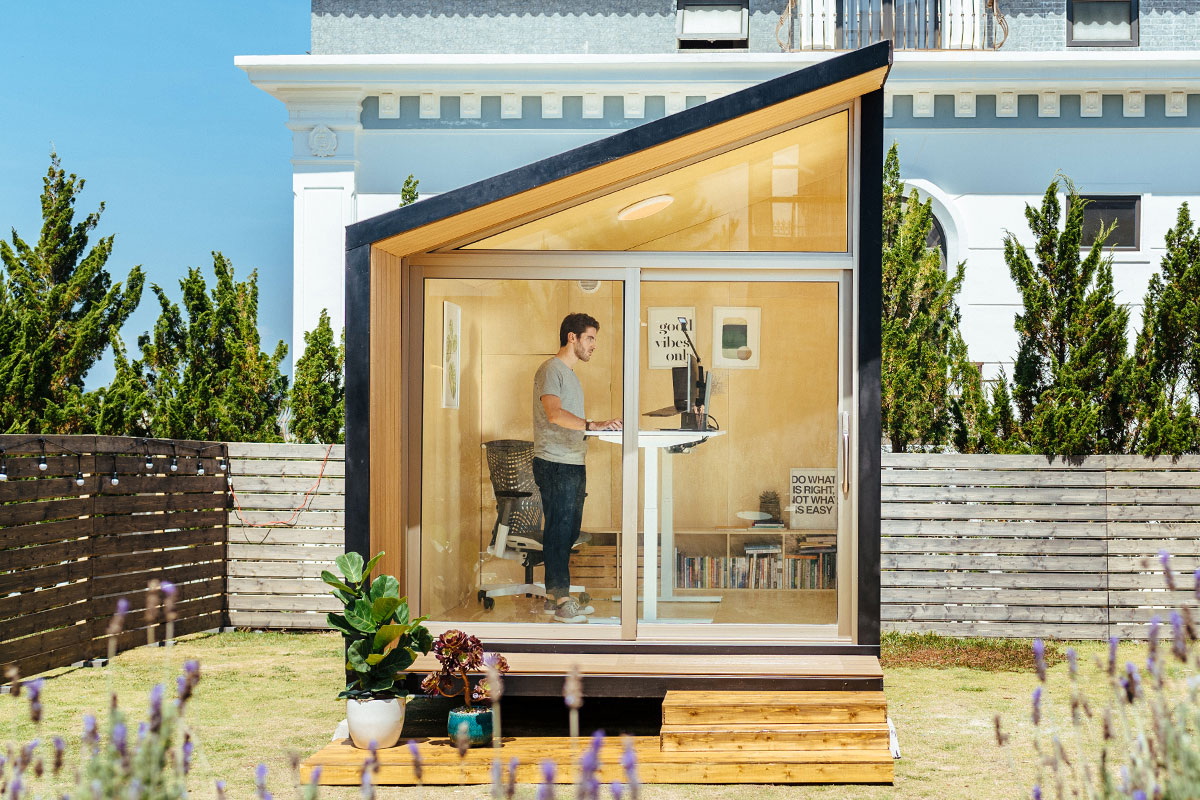
WorkPod
| Overall size | 8.5’W x 12’L x 11’H |
| Floorspace | 102 square feet |
| Ceiling height | 6.8’ to 9.3’ |
| Weight capacity | 2.9 tons |
| Door & Window dimensions, material (include glass) | Main door: 7.5’W x 6.8'H 3 windows: 1.1’W x 7.9’H Window material: Wooden frame, 5/16” tempered glass, composite wood cover Door material: Anodized aluminum frame, 5/16” tempered glass |
| Siding, roof, floor & balcony material | Siding: Plywood 1/2”, wooden frame, honeycomb paper, plywood 3/8”, bitume, housewrap, vinyl siding Roof: Roof shingles Floor: Plywood Balcony: Composite wood |
| Electrical devices | 1 RCB (Residual current breaker) 3 Wall outlet (Universal wall sockets) 1 Ceiling light switch 1 Ceiling light 1 Ventilator switch 1 Ventilator 66ft power cable with 2 connectors |
| Power input | Maximum voltage: 110V AC (US standard) Maximum current: 25A Maximum power dissipation: 2750W |
| Interior furniture | Unfurnished option: 1 Bookshelf, 1 Electrical Cabinet Furnished option: 1 SmartDesk Connect, 1 Autonomous Chair Ultra, 1 Monitor Arm, 1 Cable Tray, 1 Filing Cabinet, 1 Anti-Fatigue Mat, 1 Bookshelf, 1 Electrical Cabinet |
| Compatible with | Portable air conditioner: A/C units with dimensions smaller than 22” L x 20” W x 88” H and a 5.9” vent hole diameter will fit well. Heater: A small personal heater is more than sufficient. |
- WorkPod Mini: Slightly smaller and more affordable, this model is perfect for focused activities like writing or studying.
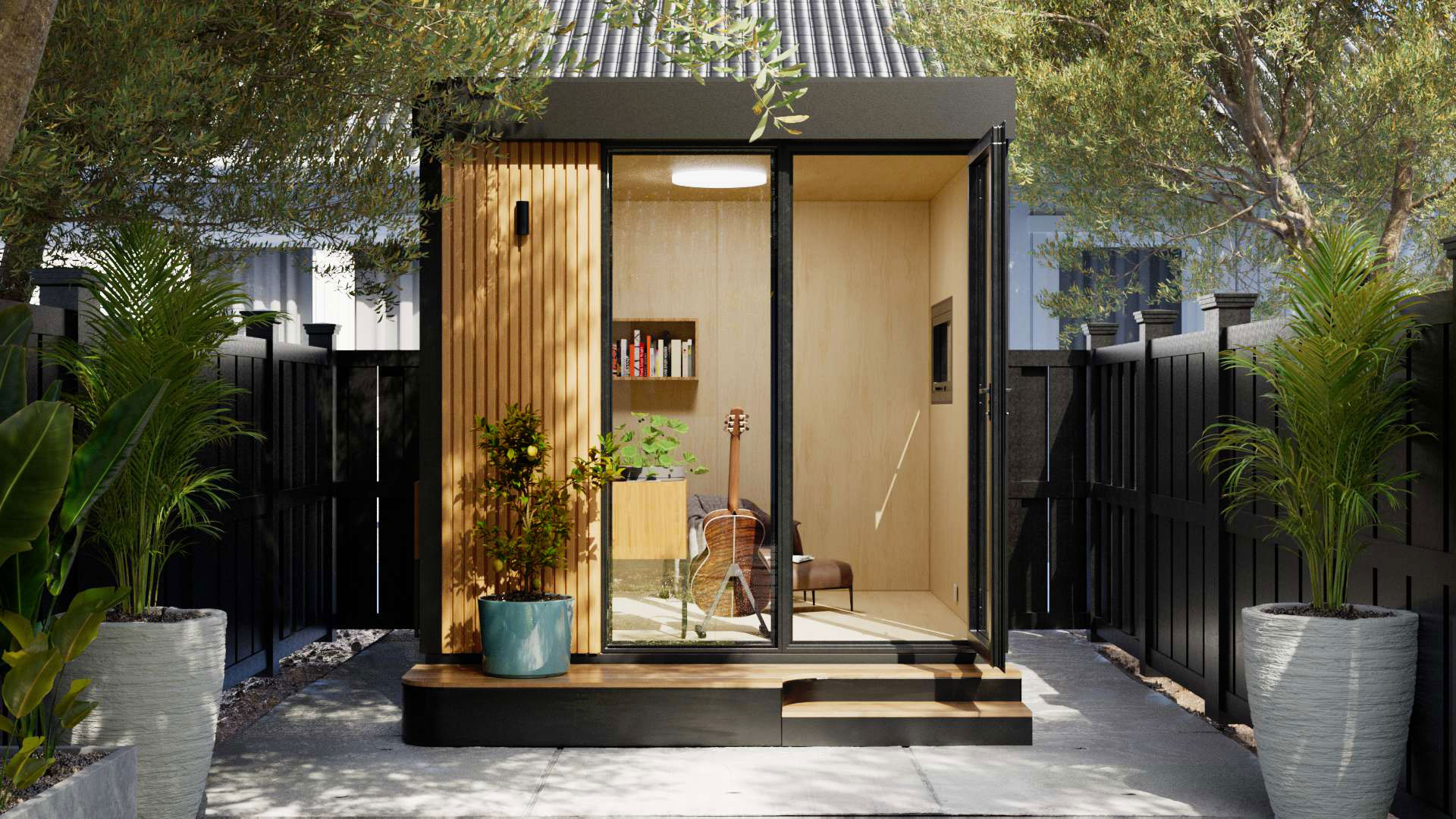
WorkPod mini
| Dimension | Overall size: 8’7"W x 9’L x 9’3"H Floorspace: 80 square feet Ceiling height: 7’3" Weight capacity: 2.3 tons (including Pod body) Pedestal: 24"W x 103"L x 9"H |
| Door & Window dimensions, material (include glass) | Main door: 37"W x 89"H (open side) & 33"W x 89"H (fixed side) Window: 43"W x 20"H Window & door material: Powder coated aluminum, 5/16" tempered glass |
| Siding, roof, floor & balcony material | Siding: Plywood 1/2" , steel frame, honeycomb paper, plywood 3/8", bitume, housewrap, vinyl siding Roof: Metal roofing Floor: Plywood Balcony & Pedestal: Steel frame & wood plastic composite |
| Electrical devices | 1 RCB (Residual current breaker) 2 Wall outlet (Universal wall sockets) 1 Ceiling light switch 1 Ceiling light 1 Wall light 1 Ethernet wall port 66ft power cable with 2 connectors |
| Power input | Maximum voltage: 110V AC (US standard) Maximum current: 25A Maximum power dissipation: 2750W |
- WorkPod Versatile: With its flexible layout, it’s great for combining work with hobbies, such as painting or music.
/https://storage.googleapis.com/s3-autonomous-upgrade-3/production/ecm/240412/StudioPod-2.jpg)
WorkPod Versatile
| Overall size | 8’4”W x 12’6”L x 9’10”H |
| Floorspace | 105 square feet |
| Ceiling height | 7’3” |
| Weight capacity | 2.9 tons |
| Pedestal | 18”W x 43”L x 7”H |
| Door & Window dimensions, material (include glass) | Main door: 39”W x 89”H Large window: 59”W x 81”H Small window: 39”W x 39”H Window & door material: Powder coated aluminum, 5/16” tempered glass |
| Siding, roof, floor & balcony material | Siding: Plywood 1/2”, steel frame, honeycomb paper, plywood 3/8”, bitume, housewrap, vinyl siding Roof: Roof shingles Floor: Plywood Pedestal: Steel frame & wood plastic composite |
| Electrical devices | 1 RCB (Residual current breaker) |
| Power input | Maximum voltage: 110V AC (US standard) Maximum current: 25A Maximum power dissipation: 2750W |
| Furniture (optional) | Cabinet, Desk, Small & Big Bookshelf, TV Shelf, Foldable Sofa Table & Electrical Cabinet* (*Electrical Cabinet always included) |
- WorkPod Solar: The eco-friendly choice for off-grid solutions, combining sustainability with functionality.
7. FAQs
Can You Build a 150 sq ft ADU Without a Permit?
In many areas, a 150 sq ft ADU may bypass permits if classified as a non-permanent structure. For example, units used as home offices or studios often face fewer regulations than those intended for residential living. However, key considerations include:
- Setback Requirements: Ensure your ADU meets the minimum distance from property lines and neighboring buildings.
- Utility Connections: Adding water, sewer, or electricity often triggers permit requirements.
- Usage Limitations: Some jurisdictions restrict non-permitted ADUs to non-residential uses, such as workspaces.
Consult your local zoning office to determine if a permit-free ADU is feasible for your property. Autonomous WorkPods, designed as permit-free solutions, offer a streamlined option for creating a functional home office.
How much does it cost to maintain a 150 sq ft ADU?
Maintaining a 150 sq ft ADU is relatively affordable due to its compact size. Annual costs typically range between $500 and $1,000, depending on the materials used, the ADU’s age, and its utilities. Regular expenses include:
- Cleaning: Minimal cleaning is required, often handled by homeowners themselves.
- Repairs: Occasional maintenance for appliances, plumbing, or electrical systems is less costly compared to larger homes.
- Utilities: Lower energy and water consumption mean reduced bills, especially if energy-efficient solutions like solar panels are used.
To reduce costs further, invest in durable materials during construction and energy-efficient appliances.
What is the lifespan of a 150 sq ft ADU?
The lifespan of a 150 sq ft ADU largely depends on the quality of construction and materials used.
- Prefab Units: High-quality prefabricated ADUs can last 30–50 years with proper care. Prefab manufacturers often use weather-resistant materials designed for durability.
- Custom-Built Units: With robust materials and regular maintenance, a custom-built ADU can last as long as a traditional home, often 50+ years.
- Maintenance Impact: Routine upkeep, such as sealing cracks, repainting, and replacing worn-out parts, extends its longevity. Investing in features like insulated walls and durable flooring ensures the structure withstands environmental wear and tear.
Can a 150 sq ft ADU be expanded later?
Yes, a 150 sq ft ADU can be expanded, but there are factors to consider:
- Permits: Expansion usually requires additional permits and must comply with updated zoning laws and building codes.
- Structural Design: Prefab units may have limitations on expansion due to their pre-designed structure, while custom-built ADUs offer more flexibility.
- Cost of Expansion: Costs will vary depending on the type of addition, materials, and labor but generally range from $10,000 to $30,000 for small expansions.
- Planning for Expansion: Homeowners should consider modular designs or layouts that allow future extensions, such as adding a loft or extending the footprint horizontally.
Do 150 sq ft ADUs increase property taxes?
Yes, adding a 150 sq ft ADU to your property typically increases its assessed value, which can result in higher property taxes.
- Tax Assessment: The increase depends on local regulations and the added value of the ADU. For example, if the ADU increases the property value by $50,000, your taxes may rise proportionally.
- Regional Variations: Some jurisdictions offer tax incentives for energy-efficient ADUs or those used for affordable housing.
- Minimizing Tax Impact: Homeowners can opt for non-permanent structures, such as ADUs without permit, which may not significantly affect property taxes. Consulting with a local tax professional can provide clarity.
Can I rent out a 150 sq ft ADU?
Yes, 150 sq ft ADUs are often suitable for rental purposes, but their legality depends on local regulations.
- Short-Term Rentals: Platforms like Airbnb allow ADUs to generate income, particularly in urban areas or popular tourist destinations.
- Long-Term Rentals: Some jurisdictions permit long-term leases for ADUs, often requiring compliance with housing codes.
- Occupancy Limits: Smaller ADUs may be limited to single occupants or couples due to space constraints.
- Maximizing Rental Potential: Adding attractive features like a kitchenette, modern finishes, or outdoor seating can increase its appeal to renters.
What are the best materials for a 150 sq ft ADU?
Using durable and lightweight materials ensures longevity and efficiency in a 150 sq ft ADU. Recommended materials include:
- Exterior: Fiber cement siding, weather-treated wood, or metal panels for durability and low maintenance.
- Insulation: Spray foam or rigid foam insulation for energy efficiency and soundproofing.
- Windows: Double-pane windows with low-emissivity (Low-E) glass for thermal efficiency.
- Flooring: Engineered hardwood, vinyl planks, or ceramic tiles for easy cleaning and durability.
- Roofing: Metal or asphalt shingles for weather resistance.
Using these materials not only reduces long-term maintenance costs but also enhances the ADU’s energy efficiency.
Are 150 sq ft ADUs energy-efficient?
Yes, 150 sq ft ADUs are inherently energy-efficient due to their smaller footprint and reduced resource demands. Key factors include:
- Energy Usage: Heating, cooling, and lighting smaller spaces consume significantly less energy compared to larger units.
- Efficiency Features: Incorporating elements like LED lighting, energy-efficient windows, and high-quality insulation can further reduce energy bills.
- Renewable Options: Adding solar panels, such as those on Autonomous WorkPod Solar, makes the ADU self-sustainable and eco-friendly.
- Smart Technology: Installing smart thermostats and energy monitoring systems ensures optimized energy use while maintaining comfort.
This combination of design and technology makes 150 sq ft ADUs a sustainable choice for eco-conscious homeowners.
Conclusion
A 150 sq ft ADU is a compact, versatile, and cost-effective addition to any property. Whether used as a home office, guest house, or personal retreat, it provides endless possibilities for small-space living. With efficient 150 sq ft ADU plans, innovative design features, and a clear understanding of costs and regulations, you can create a functional and stylish space tailored to your needs.
For inspiration, explore other options like the 200 sq ft ADU for slightly larger spaces or a 500 sq ft ADU for those with more expansive property goals. Additionally, budget-friendly solutions like a prefab ADU under $100k or understanding the concept of a secondary dwelling unit can help you find the perfect match for your property.
Stay connected with us!
Subscribe to our weekly updates to stay in the loop about our latest innovations and community news!
Interested in a Link Placement?
Spread the word
.svg)



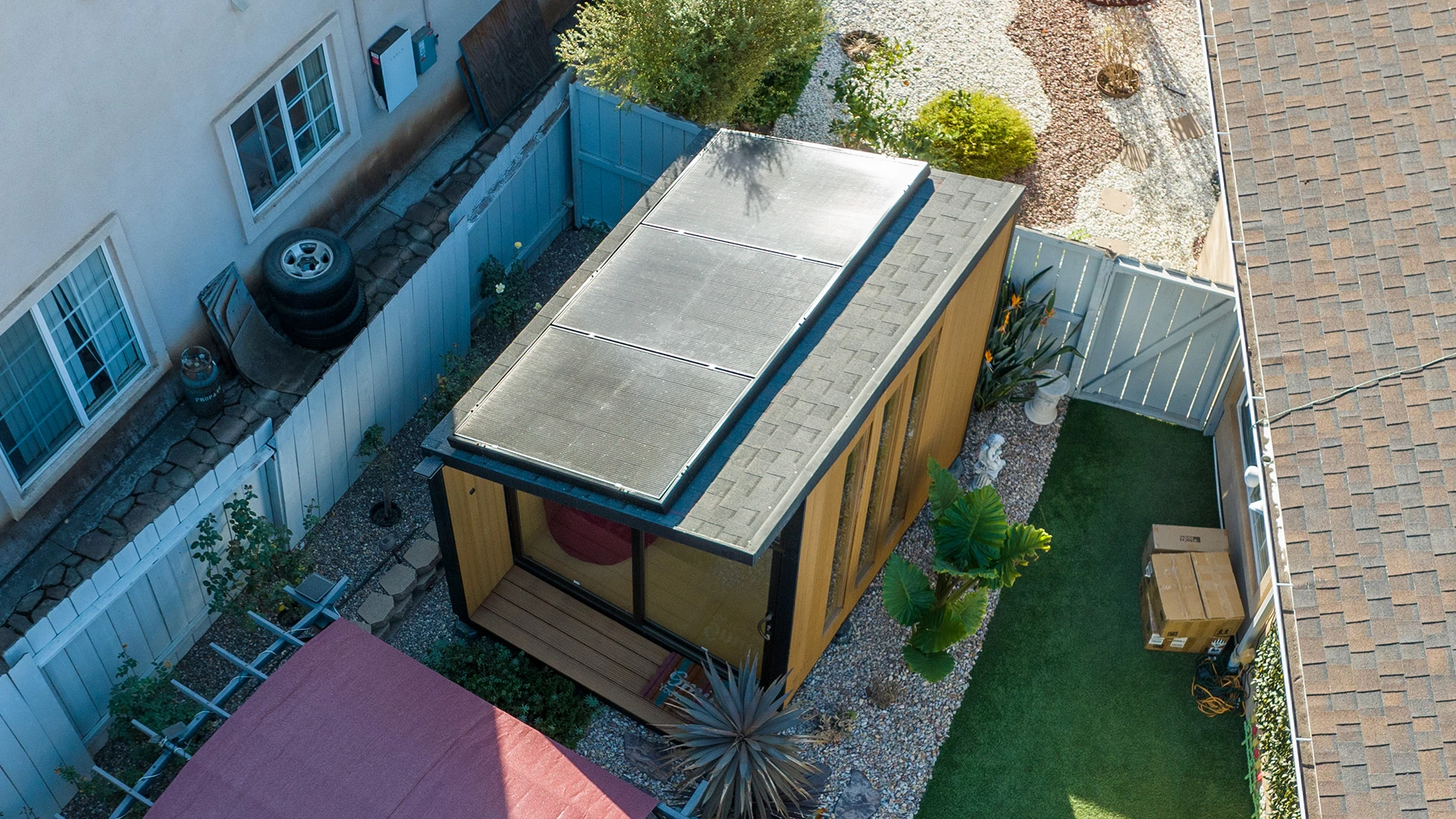

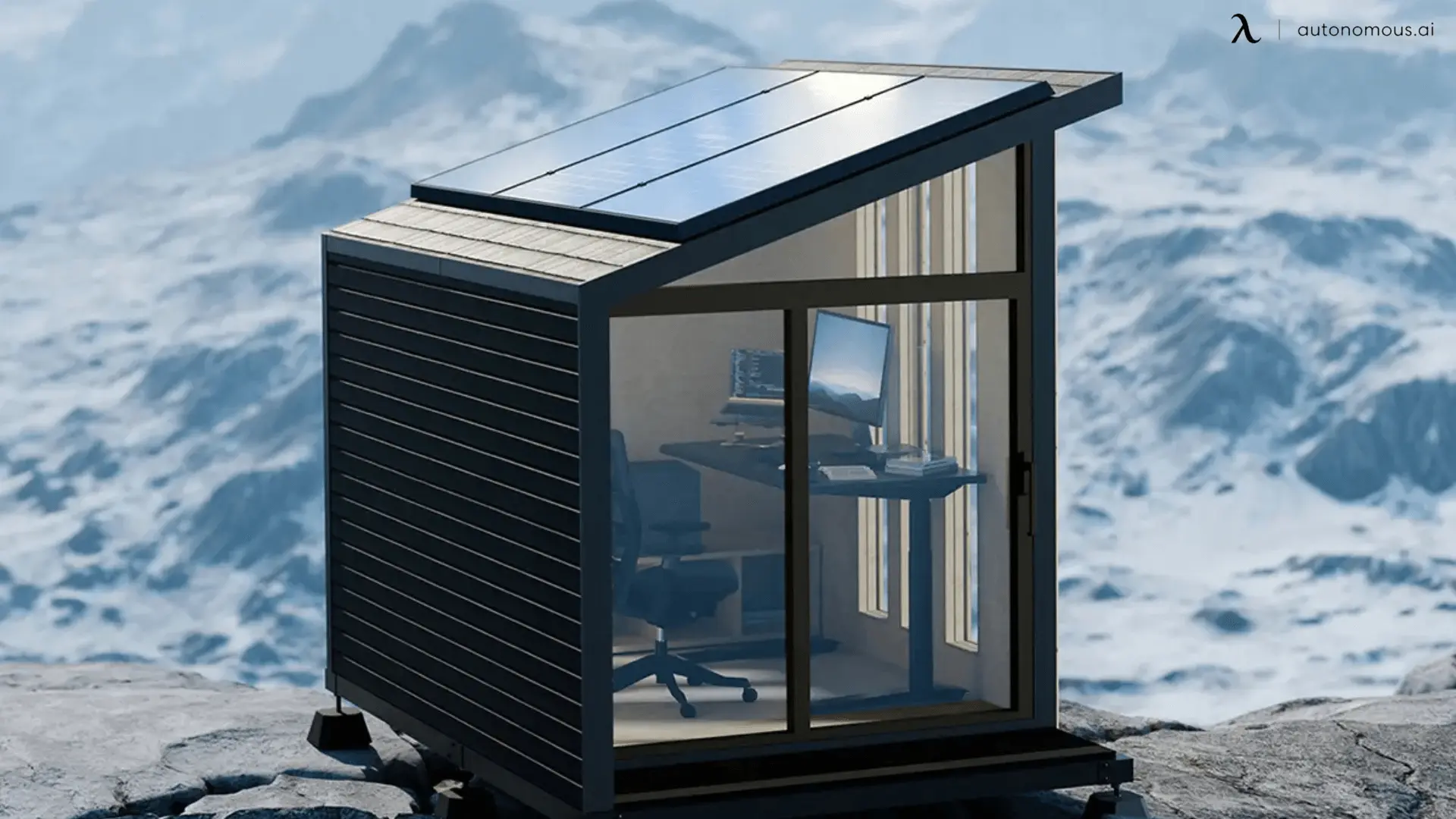
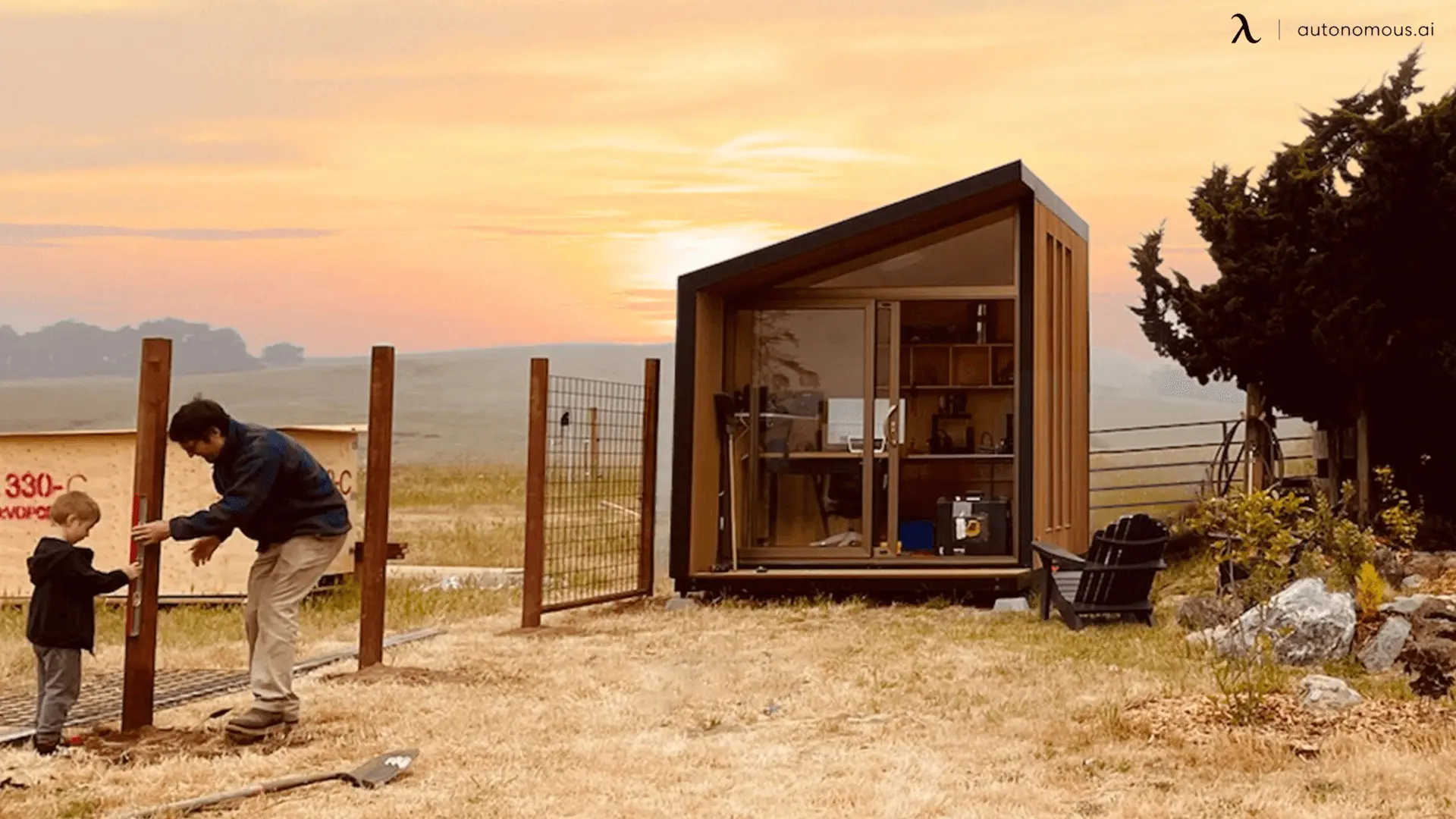


/https://storage.googleapis.com/s3-autonomous-upgrade-3/production/ecm/230914/bulk-order-sep-2023-720x1200-CTA-min.jpg)

/https://storage.googleapis.com/s3-autonomous-upgrade-3/production/ecm/230824/image_tMoN47-V_1692155358869_raw-93ed49d8-7424-464e-bdfe-20ab3586d993.jpg)